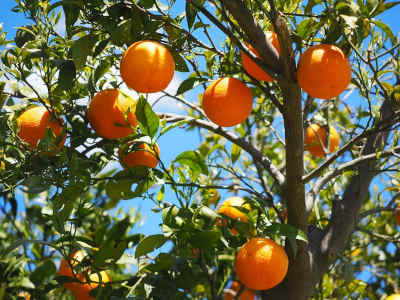Grow Your Own Oranges

As is a common theme in this section of the website, it is best to start your food trees now instead of waiting for disaster to strike first.
Getting started. Some orange tree varieties can be grown straight from seed. Other varieties will require grafts to get the same variety.
Even if a tree is grown from orange seed it will be a long 15 year wait before it will produce fruit. Also, the root of orange trees can be a problem for seed grown trees as the soil and climate will likely not match what the orange tree has evolved to live in. So propagation via grafting to other root stock such as trifoliate orange is likely a better option.
Tree care: The three categorize we will touch on are watering, fertilizing, and pruning. Water is usually the thing most needed for improving the growing condition of an orange tree vs simply planting and walking away. When planting a seedling frequent watering is needed to keep the plant alive. When older, watering is the single most important thing you can do to increase yield.
Be mindful that water in the fall can usually be withheld.
If a mature orange tree doesn't produce the expected fruit then consider fertilization and weed control below the trees canopy. Try to add nutrients by adding fish scraps after cleaning your catch. Egg shells and mulch as well.
Pruning the orange tree for shape is not necessary, just remove damaged or dying branches.
I mentioned varieties of oranges earlier. There are many. I won't go much into that other than to mention that you might want to consider blood oranges. Blood oranges are considered by many to be the best tasting oranges around.
Whichever variety you choose protection from freezing temps are a must. Freezes will kill the trees. So, pots that can be moved indoors or heated green houses are a must for all but the warmest climates.
Tip citrus trees do not continue to ripen once picked. Leave fruit on the tree until ready to be used.
